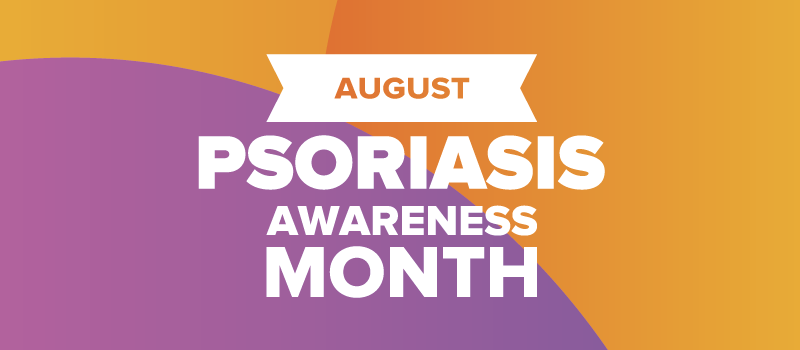What’s the Buzz
The Bee Healthy Blog
Cleft Lip and Palate: Causes, Diagnosis, & Treatment

Key Takeaways
-
The exact cause of cleft lip and cleft palate is unknown, but it is believed to be a mix of genetic and environmental factors, including medications and the mother’s environment during pregnancy.
-
The 20-week ultrasound (also referred to as an anatomy scan) can diagnose a cleft lip and cleft palate as they typically develop between 18 and 22 weeks of pregnancy.
-
A cleft lip and palate can be treated by surgical methods such as facial reconstructive surgery or nasal alveolar molding, a non-surgical treatment that reshapes the lips, gums, and nasal tissues.
Cleft lip and cleft palate are some of the most common birth defects; cleft lip with cleft palate affects approximately 1 in 1,600 babies in the United States, according to the Centers for Disease Control and Prevention (CDC). Cleft lip without cleft palate is less common, affecting about 1 in 2,800 babies in the U.S.
Cleft lip and cleft palate are splits in the lip or palate (roof of the mouth) that occur when these facial structures don’t close normally during pregnancy. Some babies have both a cleft lip and a cleft palate, while others have only a cleft lip or only a cleft palate. Cleft lip and palate are often isolated birth defects but can sometimes be one of the signs of an inherited genetic syndrome along with other craniofacial anomalies.
Please continue reading to learn more about the causes, diagnosis, and treatment options for cleft lip or palate.
What does a cleft lip and palate look like?
During a baby’s development in pregnancy, cells and tissues grow from the sides towards the center of the face to form the facial features. As the baby develops, the lips form between weeks 4-7 of pregnancy, and the palate (roof of the mouth) forms between weeks 6-9 of the pregnancy.
Sometimes, the tissues that make up the lip do not come together completely. This leaves a slit or gap in the upper lip. It can be a small opening or a larger gap that extends to the baby’s nose. The separation can be on one side, both sides or rarely, in the center. Similarly, a cleft palate occurs if the tissues that make up the roof of the mouth do not join fully. In some babies, the entire palate is split, while in others, a portion of the palate is affected. This birth defect can appear as:
-
Cleft lip: A split in the upper lip that is just a small notch or a larger defect that extends from the lip through the gum and palate to the nose. It can be on one side (unilateral cleft lip) or both sides (bilateral cleft lip).
-
Cleft palate: A split in the soft palate and/or hard palate that does not affect the outer appearance of the face.
-
Cleft lip and cleft palate: A split in the lip and palate that affects one or both sides of the face.
What causes cleft palate or lip?
The exact cause of cleft lip and cleft palate is unknown. It is believed to be a mix of genetic and environmental factors, including certain medications and the mother’s environment during the pregnancy, such as vitamin deficiency and tobacco or substance use.
Who is most likely to get a cleft palate and cleft lip?
Some of the known risk factors for cleft lip and cleft palate include:
-
Family history: Cleft lip and cleft palate affect babies more often if there is a family history of cleft and craniofacial conditions.
-
Certain medicines: Women who take certain anti-seizure medicines, such as valproic acid and topiramate, during the first trimester are at an increased risk of having a baby with a cleft palate and cleft lip. Other medications that can increase the risk of this congenital disorder include Accutane, an acne medication, and methotrexate, a medication used for cancer and other autoimmune diseases such as rheumatoid arthritis or psoriasis.
-
Folic acid: Expectant mothers who do not take folic acid during early pregnancy have a 4-5 times higher risk of having babies with cleft lip and palate.
-
Tobacco use: Women who smoke have a higher chance of having a baby with a cleft lip and palate.
-
Alcohol use: Women who drink large amounts of alcohol (on at least 3 occasions with 5 or more drinks on each occasion) during early pregnancy are three times more likely to have an infant with cleft lip and palate.
-
Diabetes: Women with a diagnosis of diabetes before pregnancy are at a higher risk of giving birth to a baby with a cleft lip and cleft palate.
-
Obesity: There is some evidence that obese women are at an increased risk of having infants with cleft lip and cleft palate.
-
Diet: A Western diet that is high in meats and processed foods and low in fruits is associated with an almost two-fold risk of having a baby born with cleft lip or cleft palate.
How are cleft lip and cleft palate diagnosed?
The 20-week ultrasound (also referred to as an anatomy scan) can diagnose a cleft lip as it typically develops between 18 and 22 weeks of pregnancy. Your doctor will use 2D, 3D, or 4D ultrasounds during the anatomy scan to take pictures of your unborn baby inside your uterus. While most congenital abnormalities are discovered during the 20-week ultrasound, cleft lip can be found as early as 12 weeks of pregnancy.
A cleft lip is easier to diagnose during pregnancy compared to a cleft palate. If a prenatal ultrasound shows a cleft, the doctor may recommend amniocentesis (a sampling of the amniotic fluid) to check for inherited genetic syndromes that can cause birth defects.
After birth, a cleft lip and palate, especially a cleft lip, is readily visible on the baby’s face. However, some types of cleft palate, such as a bifid uvula or submucous cleft palate, may not be discovered until the child is older.
What is the survival rate of cleft lip and palate?
With treatment, most babies with cleft lip and palate can lead a healthy life.
Without treatment, babies born with cleft lip and palate can develop problems with feeding and swallowing. If feeding difficulties occur, it can lead to failure to thrive. Clefts can also affect a child’s speech, for example, by causing nasal-sounding speech. In addition to speech problems, clefts can affect hearing and can cause chronic middle ear infections and hearing loss. Other complications include dental problems, including problems with permanent teeth.
Children with cleft lip or palate can develop issues with self-confidence and other social, emotional, and behavioral problems due to visible facial differences and the stress associated with the intensive medical care required to correct cleft defects.
Can you fix a cleft lip and cleft palate?
Yes, it is possible to fix a cleft lip and cleft palate with surgery. The treatment plan depends on the child’s age, the extent of the baby’s cleft lip and palate, and whether there are other birth defects present.
What type of doctor treats cleft palates and cleft lips?
The cleft team consists of many different specialists, including plastic surgeons who specialize in cleft lip and cleft palate repair surgery, oral surgeons, specialists in dental and orthodontic care, ENT (ear, nose, and throat) specialists, speech-language pathologists, auditory (hearing) specialists, social workers, genetic counselors, and psychologists.
What is the surgery to repair cleft lip and palate?
Nasal alveolar molding
This is a non-surgical treatment that is done before cleft lip and cleft palate repair surgery using a plastic plate. It helps to reshape the lips, gums, and nasal tissues and can make the cleft less severe, thereby reducing the number of surgical procedures required to repair the cleft lip or palate.
Cleft lip repair
Surgeons close the split in the baby’s upper lip by creating flaps of tissue on either side of the cleft and stitching these flaps and lip muscles together. This helps to improve both the appearance and function of the lip. Jaw surgery and nasal repair may be done at the same time.
Cleft palate repair
The roof of the mouth can be rebuilt, and the defect closed with various procedures on the hard palate and soft palate. These procedures involve repositioning the tissues and muscles and stitching the split closed.
Ear tube placement
Children with cleft palate may receive ear tubes to lower the risk of chronic ear infections, which can lead to hearing loss. Ear tubes prevent fluid buildup in the ear.
Facial reconstructive surgery
Children with cleft lip and palate may require additional surgeries to improve the appearance of their lips, mouth, and nose.
At what age is surgery for cleft palate and cleft lip repair done?
Cleft lip surgery to repair a baby’s lip is usually done before the baby is 12 months old. Surgery for cleft palate repair is usually done before the baby is 18 months old.
Keep in mind that treating children with cleft lip or palate is a long-term endeavor. Many children born with clefts need additional follow-up surgical procedures from age 2 until the late teens to improve breathing, speech, hearing, and facial appearance. Most children also need other treatments, such as orthodontic treatment from a pediatric dentist or speech therapy for language development.
Save on Your Medication with BuzzRx!
Manage your PCT medication costs with BuzzRx coupons. Here are direct links to substantial savings for each medication:
-
Valproic Acid Coupon: Pay as low as $4.74 with your BuzzRx coupons.
-
Topiramate Coupon: Typical retail prices range around $200.62, and with BuzzRx coupons, you could pay as low as $9.08.
-
Folic Acid Coupon: The usual prices vary from around $25.69 to $43.26, but BuzzRx coupons can offer this medication as low as $3.87.
-
Accutane Coupon: The price is as high as $1,581.99, but with BuzzRx coupons, pay as little as $197.76.
-
Methotrexate Coupon: Prices are up to $84.99. With BuzzRx coupons, pay as little as $15.82.
Remember, these coupons are widely accepted at over 60,000 pharmacies, including major chains like CVS, Walgreens, and Rite Aid. Just present your coupon at the pharmacy to ensure you're getting the best possible price.
References:












SOCIAL